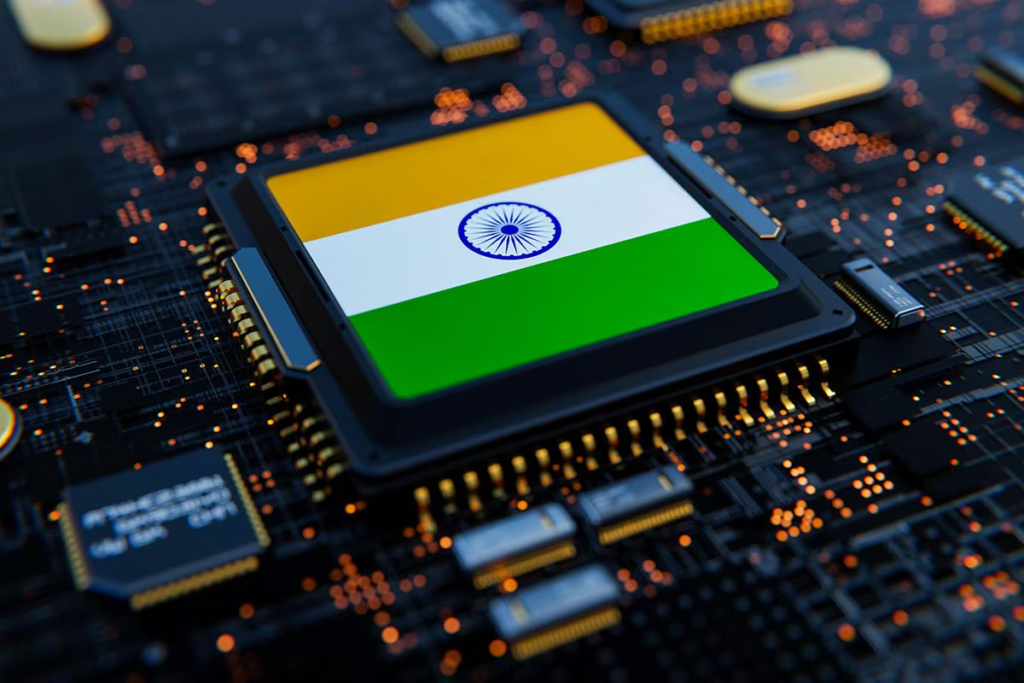India’s semiconductor ambitions are gaining traction with $18 billion investments. Learn how government policies, incentives, and strategic partnerships are driving this growth.
India’s Semiconductor Boom Jefferies Predicts a Manufacturing Triumph
Table of Contents
India is on the brink of a semiconductor revolution, with the potential to replicate its success in the automobile sector, according to a recent report by Jefferies. Backed by favorable government policies, strategic international partnerships, and substantial investments, India is positioning itself as a key player in the global semiconductor market.
With over $18 billion in semiconductor investments already underway, the country is making bold moves to reduce its reliance on imports, strengthen domestic production, and establish itself as a chip manufacturing powerhouse.
India’s Semiconductor Growth: Key Drivers
$18 Billion Investment in Five Major Projects
Jefferies’ report highlights that India’s semiconductor ambitions are no longer just plans on paper. Five major semiconductor projects are currently under construction, amounting to an investment of $18 billion.
One of the largest investments is from Tata Electronics in collaboration with Taiwan’s Powerchip Semiconductor Manufacturing Corporation (PSMC), committing $11 billion to set up a chip fabrication unit that is expected to begin operations by 2026.
Government’s Vision: $500 Billion Electronics Market by 2030
According to Jefferies’ discussion with government officials, India aims to quadruple its electronics production to $500 billion by 2030.
This push comes amid rising electronics imports, which reached $60 billion in FY 2024, accounting for 25% of India’s trade deficit—second only to oil.
To address this issue, the government is focusing on reducing import dependency and bolstering domestic manufacturing through fiscal support and subsidies.
Government Incentives Driving Growth
One of the most significant enablers of India’s semiconductor boom is the $10 billion semiconductor incentive program launched in 2021. The initiative aims to cover up to 50% of the cost for chip fabrication, display units, and testing facilities.
Additionally, certain state governments are offering extra incentives of up to 20%, effectively covering nearly 70% of the total project costs.
This financial support is already showing results, with the semiconductor sector expected to create 80,000 direct and indirect jobs, contributing significantly to the development of India’s semiconductor ecosystem.
How India Plans to Tackle Challenges
Despite the progress, the Jefferies report acknowledges several challenges, including:
- Underdeveloped semiconductor supply chain
- Limited semiconductor manufacturing expertise
- Global competition from established chipmakers like Taiwan, South Korea, and the U.S.
However, the report states that India is adopting a pragmatic approach by leveraging proven semiconductor technologies rather than competing with the world’s most advanced chip manufacturers.
A Blueprint Similar to India’s Auto Industry Success
Jefferies draws parallels between India’s current semiconductor journey and the country’s transformation in the automobile sector.
In the 1980s, India had a struggling automotive industry. But through strategic policies, infrastructure development, and market expansion, the country is now the world’s fourth-largest automobile producer and a major exporter.
The report suggests that a similar trajectory is possible for semiconductors—focusing on cost-effective production, design expertise, and global alliances rather than competing with cutting-edge chip technologies.

India’s Semiconductor Future: What’s Next?
Government’s Commitment to Full Semiconductor Ecosystem Development
Speaking about the future, Union Minister for Railways, Electronics & IT, Ashwini Vaishnaw, emphasized that the government’s focus is not just on chip manufacturing but on building an entire semiconductor supply chain—from raw materials like chemicals and gases to component production and assembly.
Strategic Alliances with Western Countries
With geopolitical tensions reshaping global supply chains, India’s strong ties with Western nations are proving to be an advantage. The country is seen as a strategic alternative to China, making it an attractive investment destination for semiconductor giants.
India’s semiconductor sector is at a turning point. With billions in investment, robust government incentives, and strategic global partnerships, the country is well on its way to becoming a major player in semiconductor manufacturing.
However, the journey is not without challenges. Building supply chains, upskilling talent, and navigating global competition will be crucial in determining whether India can truly become a semiconductor hub by 2030.
Stay tuned for more updates as India accelerates its semiconductor revolution!
Also read: How Will Elon Musk’s Starlink Transform Internet Services in India? Expert Weighs In
